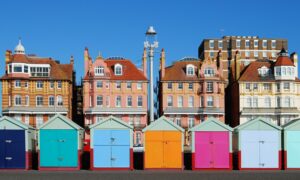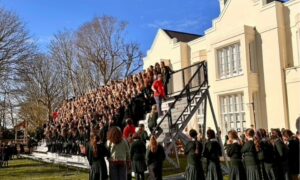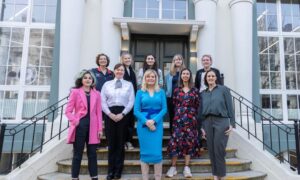Vox Pop
Over the past few weeks, my walks to and from school have been enhanced by a new podcast series called ‘The Brighton Paradox’. The brainchild of Richard Freeman from Always Possible, ‘The Brighton Paradox’ takes a broad sweep of the city’s history, and sets out to define the place in which we live and work – something more easily said than done for a city with an ongoing identity crisis.
Freeman tackles some big questions: is Brighton as great as it thinks it is? If Brighton is a city, where is the city centre? Why is a city often deemed the embodiment of inclusivity ranked in the top five for inequality and homelessness in the UK? Just some of many paradoxes explored in the series.
In attempting to understand what Brighton was, what it is, and what it could be, Freeman takes the best approach possible: talking to people, listening to the cacophony of voices that inhabit this “beautiful bubble”. Such local legends as Norman Cook and Caroline Lucas add to the debate, alongside students who arrived here twenty years ago and never left; the creatives who flocked here in the early noughties; and, of course, the people who were born and bred here.
One of the things I set out to do when I joined Brighton Girls three years ago was to restate and celebrate the school’s place in the heart of this unique city. As outlined in my Designing the Future vision document, our aim is to create a school completely in tune with its locality and, much like Richard Freeman set out to do in The Brighton Paradox, to do this by listening to a range of voices as we understand our heritage, appreciate our relevance and determine where we go next.
During the pandemic, we launched a Future Skills Forum – an opportunity for teachers and parents to exchange ideas and bridge the gap between education and the workplace. As we look to reignite this discussion, over the last few weeks, I have enjoyed speaking to parents on a variety of topics, from the status of STEM subjects and the place of coding in schools, to the rise of the chatbot, to the magical world of screen-writing. Our new Hive Society, launched this year and coordinated by our Head of Community, Rebecca Findlay, is enhancing this aspect of the vision: by creating more informal opportunities for parents, staff, alumnae, and the wider community of Brighton & Hove to come together, we are hearing voices, new and old, and they are sharing ideas, new and old.
On the topic of good ideas, we’re not forgetting the most important voices of course. Student focus groups are now a regular part of the weekly schedule. In the last two weeks, I have spoken to students about food (always a hot topic) and assemblies. Next up for discussion is one of my favourites: friendships – how, as teachers, we can help and how we often hinder. Meanwhile, in Allies Club, Mr Bashford has been discussing the experience of students of colour at our school and students from Year 5 upwards have completed the GDST’s Undivided survey, which gives students another channel through which to voice their feelings and will give us an indication of their sense of belonging.
Our Wednesday alumnae tours bring former students (and former staff) back to Brighton Girls and, with them, pieces of the jigsaw that form the rich history of the school. Recent alumnae like Rosemary Coogan, who made a virtual appearance at our Space Day last week, and Daisy Wright, who is coming in to talk to our Sixth Forms about her work with a local MP, are now frequent visitors. With the help of a parent volunteer, we’re also delving further back, into the archives, to discover voices from the past: Elizabeth Beresford, the creator of The Wombles, was a student at our school, and her name now appears on The Beresford Building (replacing what was the unimaginatively-named ‘Admin Building’); the name Grace Eyre, an early campaigner for disability rights and special needs education, is celebrated in the name of our wellbeing house; Louisa Martingale (Brighton’s first female GP, leading gynaecologist, surgeon, magistrate) is soon to be honoured by the local community in the name of new building of the Royal Sussex Hospital. Their names and images will soon appear along the science corridor windows in the Senior school to inspire our students and prompt them to consider the positive difference they will one day make in the world. You can learn more about them on the alumnae pages of our website.
These women were all educated at our school; all helped to shape it and define it. They are part of our past but, just like our current students and parents, they are also part of our future.


